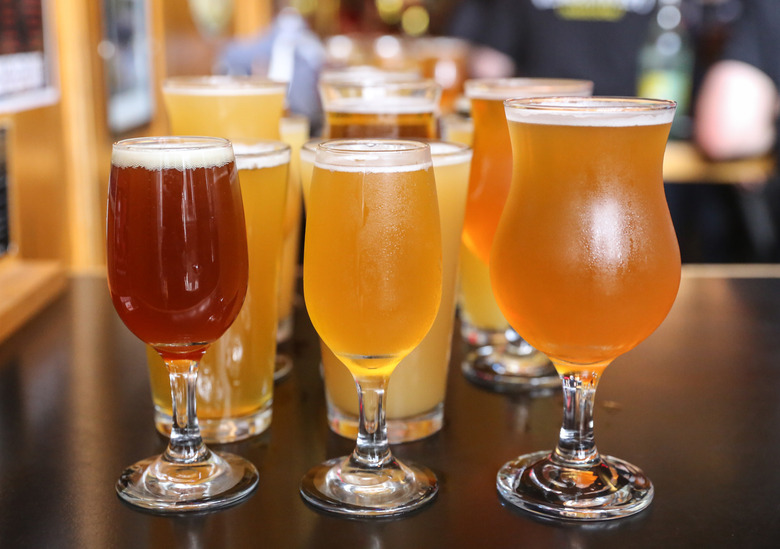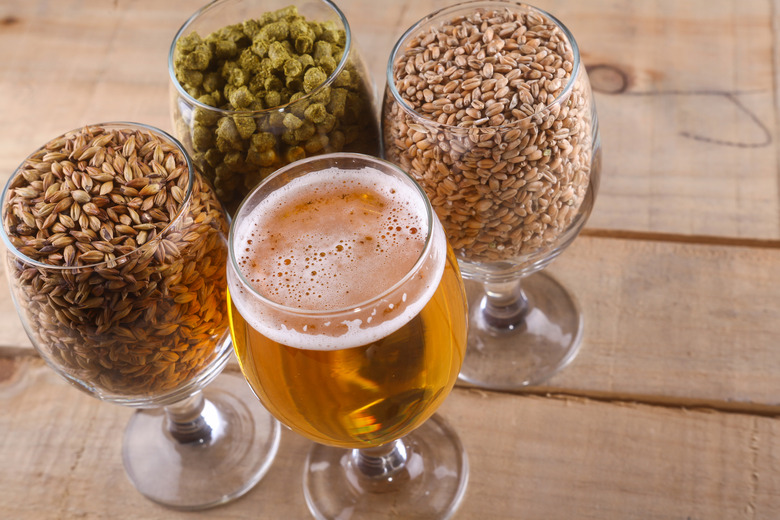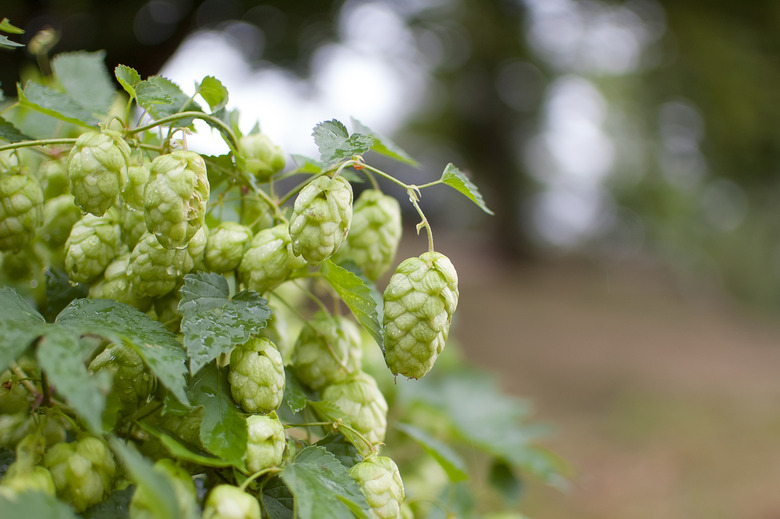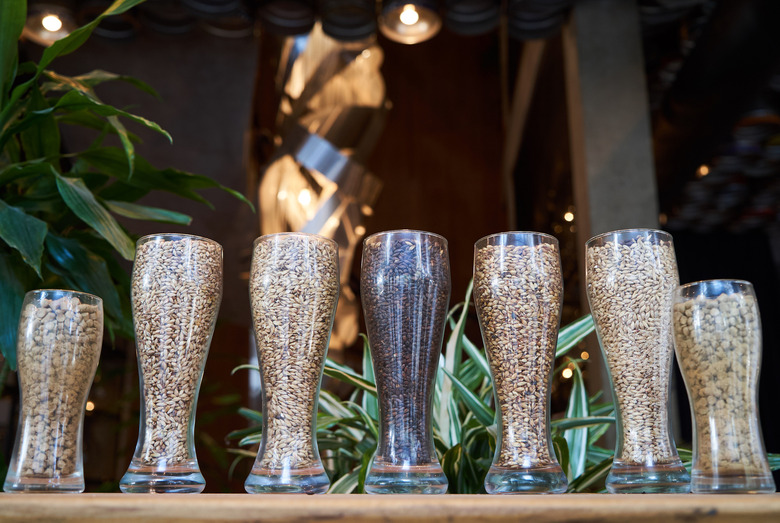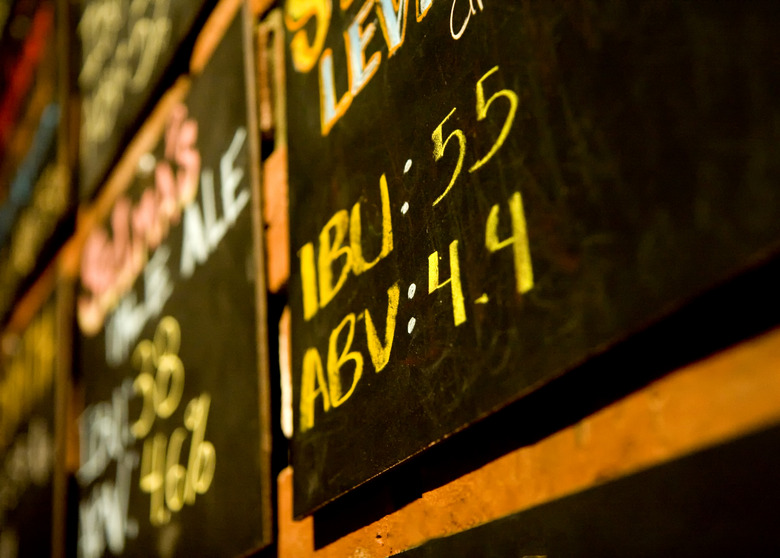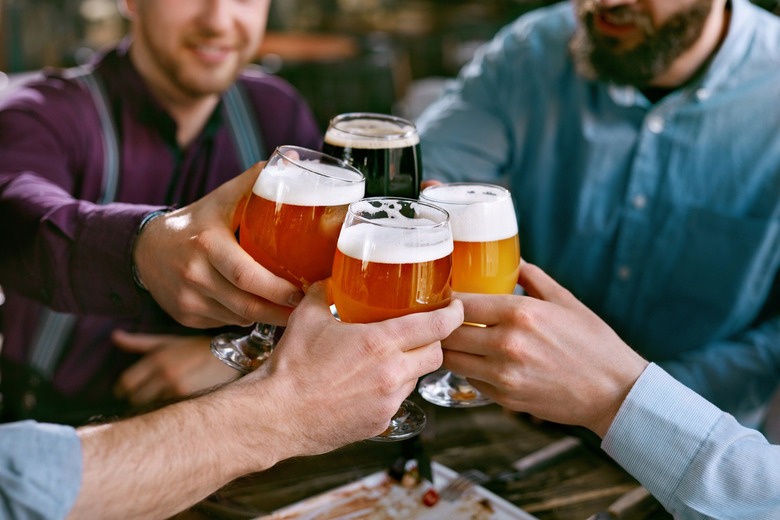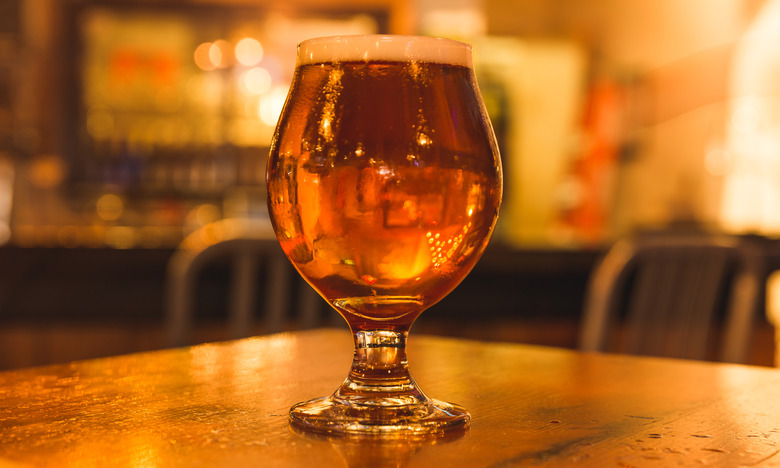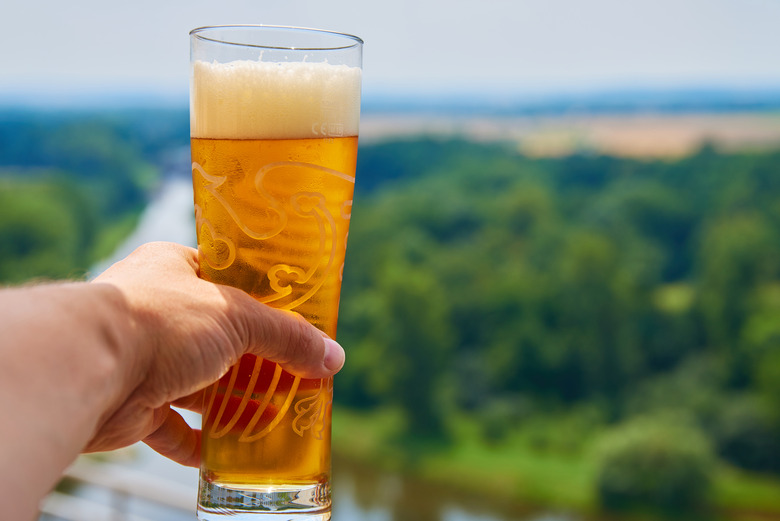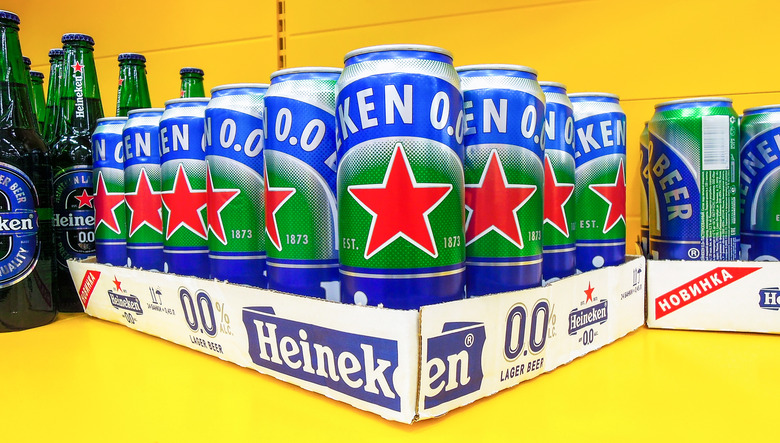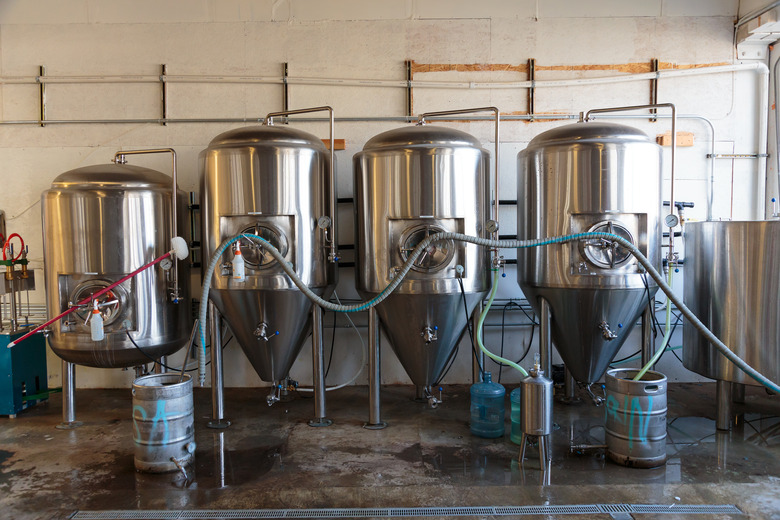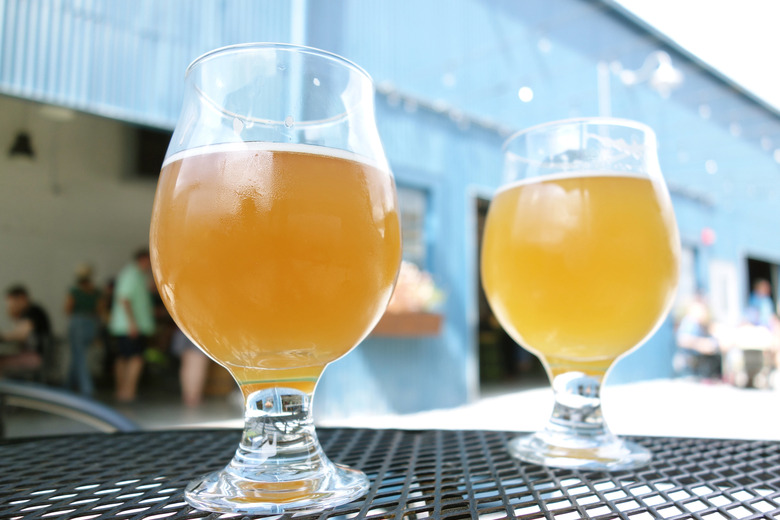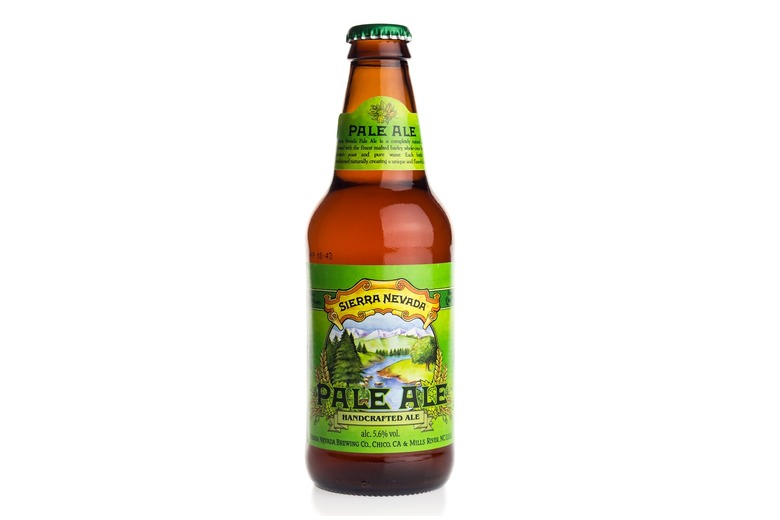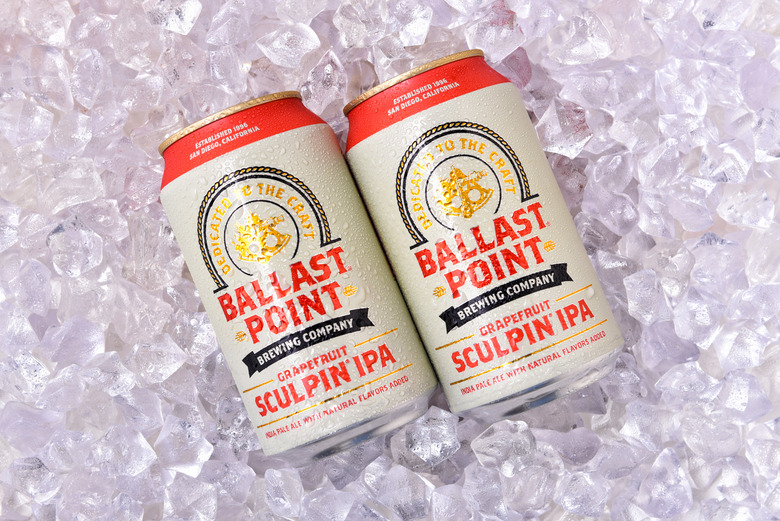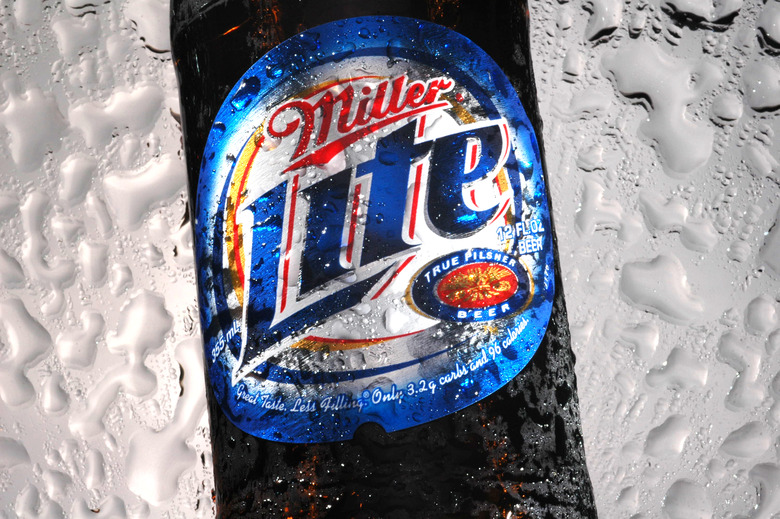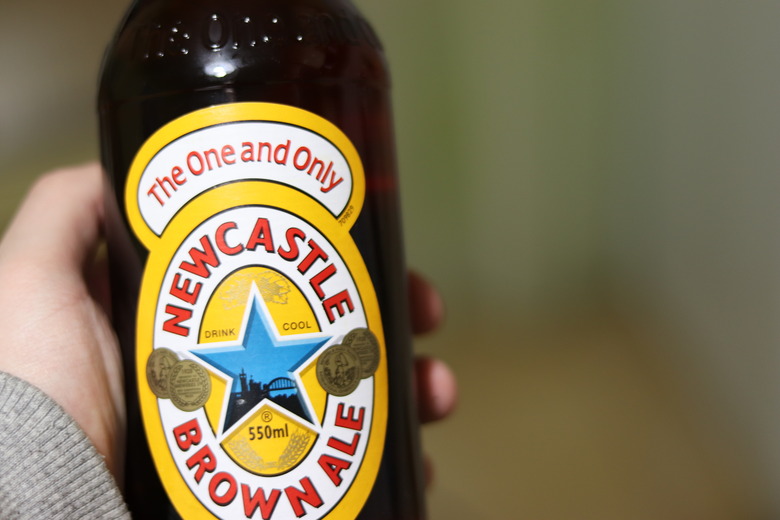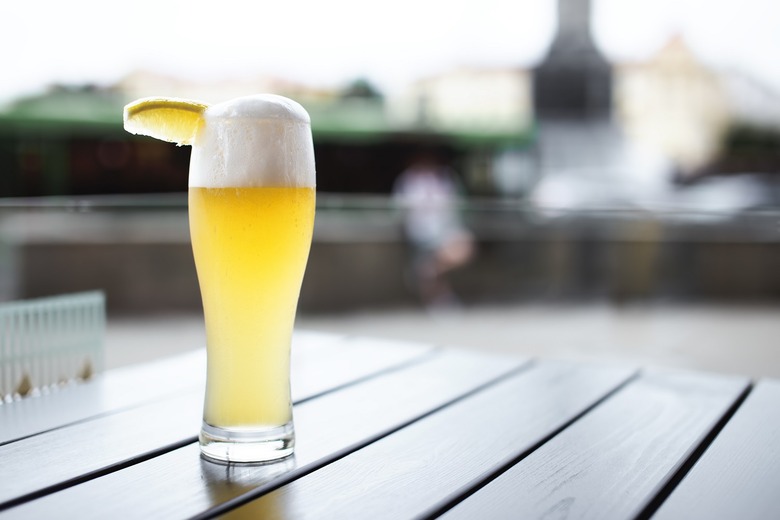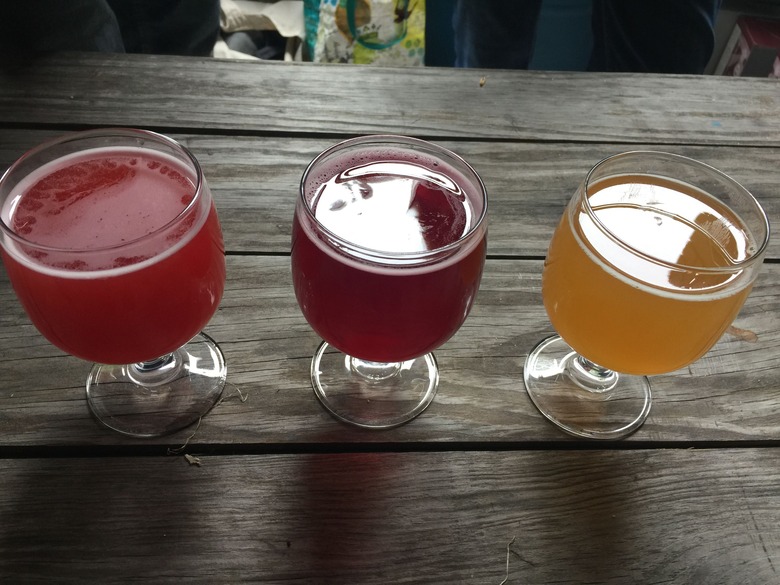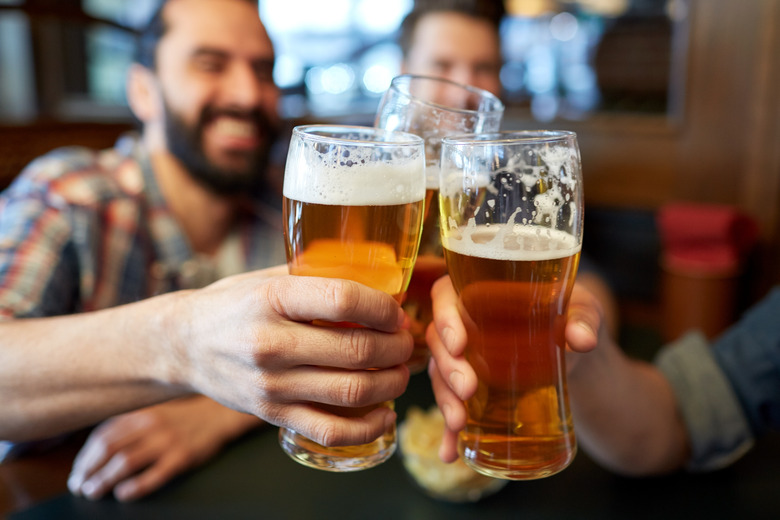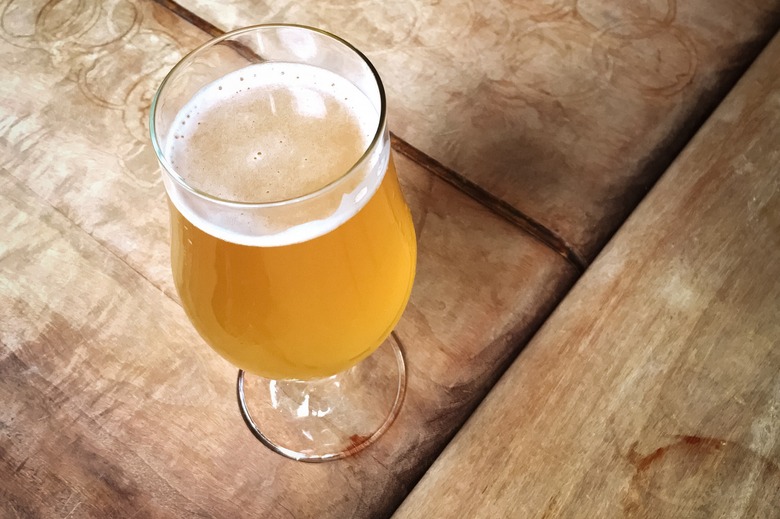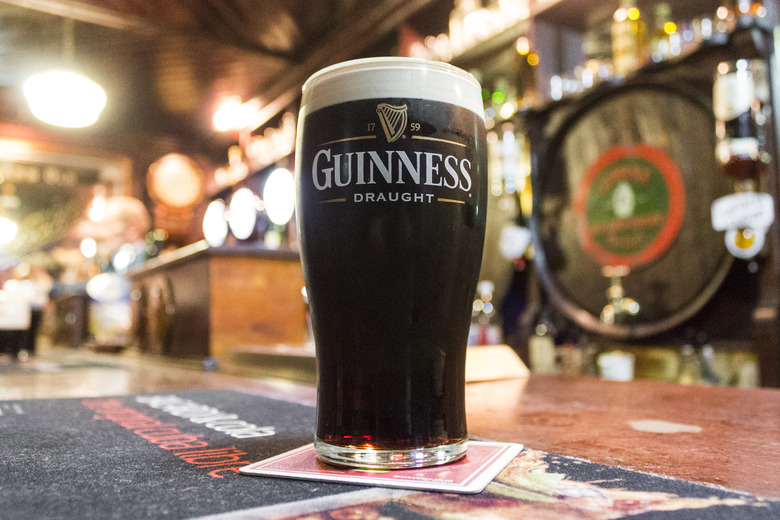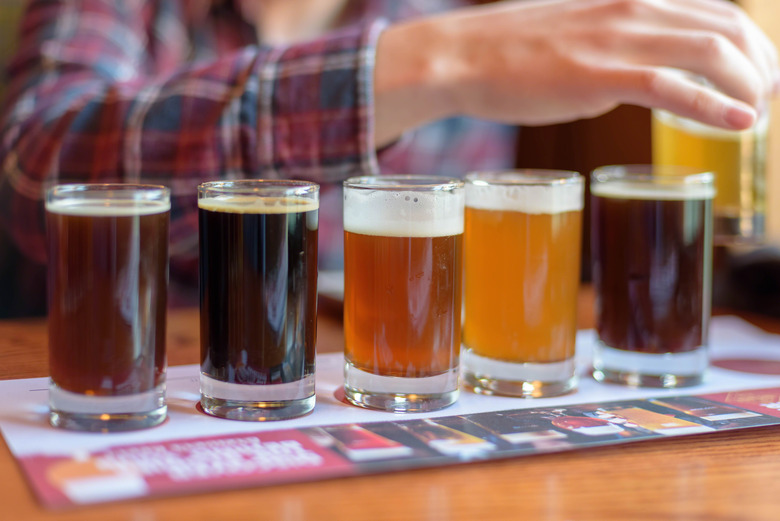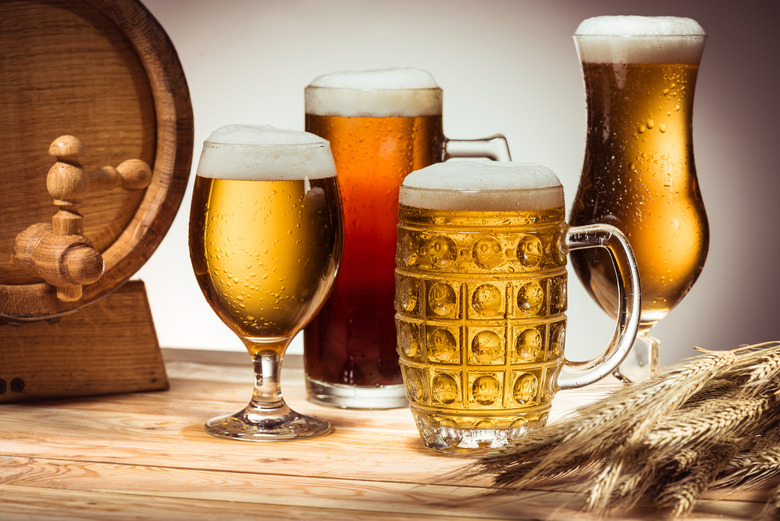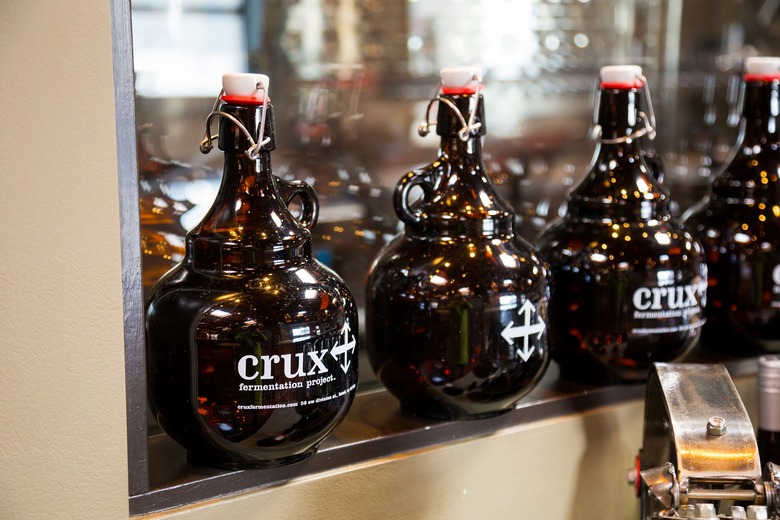What Is An IPA? And Other Beer Questions, Answered
While beer seems like maybe the simplest thing you can drink, the different kinds of beers, what goes into them, how they're served and how to enjoy them best is actually quite complex. If you've ever walked into a grocery store, craft beer shop or brewery to pick up a six-pack and felt confused about the difference between a lager and an ale or a stout and a porter, here's a little lesson in brew for you.
What are the ingredients of beer?
While other things can be added for flavor, beer comes down to four standard ingredients: water, grain (typically malted barley), hops and yeast.
What are hops?
Hops are one of the integral ingredients in beer and are added at the beginning, middle and end of the brewing process. These cone-shaped flowers add bitterness to the beer as well as general flavor and aroma. While there are over 100 different varieties of hops, some of the most common ones include cascade, nugget and centennial.
What are malts?
Malts are one of the essential ingredients in beer. They are made from processed barley that's been steeped in water, germinated and dried.
What is ABV?
ABV stands for alcohol by volume and can be found on wines, liquors and canned cocktails as well. It measures the amount of alcohol per volume in a beer and tends to range from about 3% to 20%.
How much alcohol is in beer?
The amount of alcohol in beer ranges by style. A Berliner weisse, for example, can be as low as 2.8% ABV, while an imperial stout can be as high as 12% or more. A Budweiser, however, is always 5%. Always check your beer bottle or bar menu to see how alcoholic your brew is.
What is IBU?
IBU stands for international bitterness units and measures the amount of bittering substances in any given beer. A low IBU rating like you will find in sour beers and lagers means a beer has very few bitter notes, while bitter-heavy beers like imperial IPAs will have a higher IBU.
How is gluten-free beer made?
While there are a lot of myths about gluten, Celiac disease, gluten allergies and gluten intolerances are very real. If you're one of the millions of Americans who suffer from these conditions, you can feel left out of beer since barley, wheat, oats, rye and spelt are all common beer ingredients. Gluten-free beers use alternative grains such as malted sorghum and buckwheat instead of traditional wheat or barley, which is what Glutenberg does. Other times, they are brewed to remove gluten, like Omission Brewery.
What are some non-alcoholic beers?
While alcohol seems like an integral part of beer, as low-alcohol cocktails and mocktails become a bigger food trend, beer has followed suit. Some popular breweries, such as Heineken, Brooklyn Brewery and BrewDog, offer 0.5% or less ABV brews.
What makes a beer ‘craft beer’?
According to The Brewers Association, craft breweries are small and independent. To be considered a craft brewery, the brewer needs to produce 6 million barrels of beer or fewer annually and be independently owned, with no more than 25% of the brewery owned by an outside alcohol interest. Some beers, like Blue Moon, may appear to be craft brews but are actually subsidiaries of big brewers.
What’s the difference between a lager and an ale?
All beers can be divided into two main categories: ales and lagers. The difference between the two comes down to the type of yeast used and the temperature at which the beer is fermented. Lagers are made with bottom-fermenting yeast at colder temperatures. Meanwhile, ales are brewed with top-fermenting yeast at warmer temperatures.
What’s a pale ale?
The best-known pale ale style in America is the American pale ale. This light-colored beer has a mild bitterness, medium body and medium caramel-like flavor. It also is characterized by a lower ABV, from about 4.4% to 5.4%. The American pale ale's signature is its citrus- and pine-forward flavors, though this brew type is ripe for experimentation. The best-known American pale ale is the Sierra Nevada Pale Ale, originally out of Chico, California.
What is an IPA?
IPA stands for India Pale Ale, which is a subtype of the pale ale. It has a hoppier flavor, relatively high bitterness and light color. There are four common types of IPAs: American IPAs, English-style IPAs, Imperial IPAs and New England IPAs. The main differences between these types of IPAs are the strength of the hop aroma and bitter flavor and the type of hops used. Popular examples of craft beer IPAs include the Stone IPA from Stone Brewing, Ballast Point's Grapefruit Sculpin and Bell's Two Hearted Ale.
What is a Pilsner?
The Pilsner is one of the most famous beer styles due to its easy-to-drink nature. These lagers are characterized by their pale straw color, strong clarity and moderate hoppy flavor with a sweet malty note. It's perhaps the type of brew you first think of when you think of what a beer tastes like. Miller Lite is a Pilsner, along with these other popular light beers.
What is a brown ale?
The brown ale is defined primarily by its color, which can range from a deep, slightly red-tinged copper to dark brown. The primary flavor of this brew is its maltiness, which often has notes of roasted barley, caramel and chocolate; you don't get a strong hop flavor from most brown ales. Popular brown ales include the Cigar City Maduro, Newcastle Brown Ale and Indian Brown from Dogfish Head.
What are wheat beers?
Even people who tend not to like beer can find something to like about the highly approachable wheat beer. This beer is light in color, flavor and appearance with a lower ABV of about 3.5% to 5.6%. One very popular wheat beer is Bell's Oberon, but this style also lends itself well to the addition of fruit, as seen in 21st Amendment's Hell or High Watermelon.
What are sour beers?
Sour beers taste like what their name implies: sour. And that tart flavor comes from lactic acid or other acids that develop during the brewing process. Also called wild beers, these brews are notable for their relatively low ABV and low bitterness. While they often have a very pale hue, they can also be bright red or orange due to other ingredients, especially exotic fruit.
What is a session beer?
Session beers are a little different in that they aren't limited to one style of beer or a certain flavor profile. Instead, session means that a beer is particularly refreshing and drinkable, with an ABV that does not exceed 5%.
What is a saison?
Also known as farmhouse ales, saisons are known for their fruity flavor with hints of sourness as well as pepper and other spices. They're not especially hop-forward or malty. With Belgian roots, these beers are yeasty and highly carbonated with an ABV that tends to be between 4.4% and 7%.
What’s the difference between a porter and a stout?
Porters and stouts may seem like virtually identical beers just by looking at them. They tend to both have a near-black, opaque appearance with a thick, light brown head and a creamy mouthfeel thanks to the use of dark malts when brewing. According to Portland, Maine-based Allagash Brewery, both styles share roots in the porter, which is about 300 years old. The porter style gave birth to the stout, which at its invention was a stronger brew. However, over time, the beers have sort of morphed and changed. Now, it's up to brewers to dictate what their dark, roasted beers are called.
Which state has the most breweries?
California is the home to the most craft breweries, making supporting one of those beer spots one of the best things to do in the Golden State. According to The Brewers Association, California has 841 craft breweries and produces 3.4 million barrels of beer a year.
What is America’s best brewery?
According to beer ratings site Ratebeer, Hill Farmstead is the best brewery in America and in the world. Based in Greensboro, Vermont, this brewery is best known for its expertly crafted ales, named after brewer Shaun Hill's ancestors. Other top breweries in America include Side Project Brewery in Maplewood, Missouri, and Trillium Brewing Company out of Boston.
What is a flight?
If you've ever gone to a brewery and seen a beer flight available but are too scared to fly on a plane, don't sweat it. It's just a sampling of different brews. Flights typically are served in smaller glasses that range from 2 to 6 ounces. The number of beers in a flight can vary from place to place, but this is a great way to try a bunch of different beers without getting too tipsy.
Why do some beers come in different glasses?
If you've ever been served a beer in a tulip-shaped glass, it's not just your server trying to be fancy — it's because different glasses do have different purposes that boil down to sensory enhancement, temperature control, foam support and just plain looks and history. That tulip glass, for instance, helps to expand the aroma of your beer and keep it cool, making it perfect for IPAs and sour beers.
What are crowlers and growlers?
Growlers are a way to take tap beer to go. They are glass jugs that tend to either be a half-gallon or a whole gallon that you can fill and take to go. Crowler, meanwhile, is a portmanteau that means "can growler." It's a 32-ounce vessel that starts out as an open can that is then filled with beer and seamed. It's an affordable way to get beer from your favorite brewery to go and is an easy way to drink a beer every day.
How should you pour beer?
The perfect beer pour seems like something you'll only find at the best bars in America, but you can do this at home too. In order to do so, make sure you have a clean glass. Then, hold that glass at a 45-degree angle and pour your beer, aiming for the middle of the slope. Don't be afraid to pour hard and fast and get some air in the pour. Then, halfway through, tilt your glass to a 90-degree angle and continue to pour, aiming for the center. This should result in a perfect pint with a head of about 1 to 1 1/2 inches. And once you know how to pick the right beer and pour it, expand your boozy knowledge by learning how to curate the perfect bar cart.
More from The Daily Meal:
The Best Sports Bar in Every State
The Best Cocktail Bar in Every State
Latte, Cappuccino, Macchiato: Different Coffee Drinks Explained
